Transforming automated sheet metal fabrication with Caleb Chamberlain
In this episode of The Fabricator Podcast, Caleb Chamberlain, co-founder and CEO of OSH Cut, discusses his company’s unique approach to sheet metal fabricating.
Chamberlain explains how OSH Cut offers an online platform that allows customers to upload their designs and receive instant quotes for laser cutting and bending services. He also describes how they have developed their own software to automate the quoting and production processes, as well as their efforts to expand their capabilities to include other services such as welding.
Chamberlain also discusses their use of digital advertising and their focus on customer satisfaction and continuous improvement. He emphasizes OSH Cut’s aim to streamline the metal fabricating process and provide a more efficient and user-friendly experience for their customers.
Chamberlain also addresses the issue of the wage gap in the industry and stresses the importance of paying livable wages to attract and retain skilled workers.
At the top, hosts Dan Davis and Tim Heston talk about the impact OSH Cut's "web shop" business model is making on the metal fabrication sector, especially with its design for manufacturing (DFM) services on top of its automated online ordering and instant quoting systems to support its laser cutting and press brake capabilities.
Email us at podcast@fmamfg.org with any comments, questions, or suggestions. Learn more about podcast sponsorship opportunities.
In This Episode
Learn more about FMA's Pipe + Tube Conference.
Learn more about 2024 ALAW.
Learn more about podcast sponsorship opportunities.
Learn more about OSH Cut
Read Caleb Chamberlain's column
TRANSCRIPT
Dan Davis: There's this element of people finding new ways to make parts.
Tim Heston: Oh yeah, the pie is getting bigger.
Dan Davis: Yeah.
Tim Heston: The pie is getting bigger. And it's funny when people ask me what I do. I suppose all right about sheet metal fab. And usually how I describe it is, I just point to some sheet metal part that's usually in the room or in the elevator. See this is all sheet metal. "Oh, I didn't even know."
Sara Spring: Mark your calendars. The 31st advanced Laser applications workshop will take place from June 25th to the 27th at the Suburban Collection Showcase in Novi, Michigan. This event connects manufacturers and suppliers in automotive, aerospace, agriculture, and the fabrication spaces. Enjoy three days of presentations from leading experts, cutting-edge demonstrations and fascinating open houses. Discover the latest advancements and applications that are shaping the future of the industry. Visit fmamfg.org to learn more.
Dan Davis: Hello, welcome to the Fabricator podcast. We have a special guest today in Caleb Chamberlain from OSH Cut out in Utah. He's going to share some details about his business and the unique way he's approaching metal fabricating. But, we also have another special guest. Hello Tim.
Tim Heston: Hello, Dan.
Dan Davis: Tim Heston from The Fabricator. Straight out of Stone Mountain, Georgia. So Tim did a feature on OSH Cut how long ago? Two years ago when you met him?
Tim Heston: Two years ago. Two years ago. And Gareth sent me the lead. Gareth was online and I had actually seen OSH Cut's ad and OSH Cut's content online before that, and I thought, "oh, well that may be another quote aggregator or some other online service that contracted with other shops that did the heavy lifting". And so I was like, "oh, let me just click on this". And I clicked on it. "I'm like, wait a minute. You can upload a file and wait a minute. They've got lasers, they've got brakes". And, at the time I covered several other, quote, "web shops," one in Europe and one in the United States that have online ordering systems, instant quoting. And this guy went a step further with DFM services that I had not seen before, especially with the bending simulation. So we put him on the cover in two months. We were like, "man, this is something else". And so he's a unique character. He's open, he shares what he's learned, what his mistakes are, and now he has a monthly column in the magazine Tech Talk.
Dan Davis: He's sharp and if you've ever read the column, he tackles not just boring everyday life and the sharp type stuff, but putting in new equipment. A great conversation a while back about digital advertising from his perspective. So yeah, the conversation's going to be really good. I'd like to thank Gareth for taking time out of his morning from live betting English Premier Football to find this for Tim. So congratulations.
Gareth Sleger: Wait.
Dan Davis: Don't worry. He is on a performance improvement plan. He's good.
Gareth Sleger: Wow.
Dan Davis: But anyway, our guests no need for... Well, he's always improving. Yeah, you'll enjoy the conversation with Caleb. Thanks.
Sara Spring: If you're involved in the pipe and tube industry, you won't want to miss the Pipe and Tube Conference this May in Omaha Nebraska. This event is an excellent opportunity to connect with industry experts, stay up to date with the latest technologies and explore new business opportunities. You'll leave the conference with a wealth of a knowledge and new connections to help your business succeed. So mark your calendar and join us in Omaha for the Pipe and Tube Conference. Register today at fmamfg.org. And now, back to the episode.
Dan Davis: Today's guest is Caleb Chamberlain of OSH Cut. Not O-S-H Cut, as I was corrected last week, so apologies there.
Caleb Chamberlain: Oh, we get everything. OSHA. Oshkosh.
Dan Davis: Yeah, you might be familiar with Caleb. He writes... Not only have we done a story on him... I guess, when did you first write that?
Caleb Chamberlain: Was it two years ago I think?
Gareth Sleger: Yeah, right before the-
Tim Heston: It was in 2019, 2020.
Dan Davis: So we've invited Caleb to write a column for us each month called Tech Talk, and he's provided some really nice discussion points as well as an inside look at his shop. So we'll probably talk a little about some of those topics that were covered in some of those columns. But before we get started, why don't you tell the audience a little bit about yourself and how you got into the metal fabricating field.
Caleb Chamberlain: Yeah, it's kind of a Meandering journey I guess. I have a master's degree in electrical engineering. Been writing software for my whole career. Started a company making autopilots actually in college and went from there to do work for a radar company, actually doing long-range RFID, localization type stuff. And I went to a medical devices company, and during that time period, my brother and I were always pursuing side projects making stuff. Almost always required fabricated metal and were having a hard enough time sourcing parts locally that we thought, "Hey, let's see if we can fix this. Let's make it easier". And that was in a nutshell, the genesis of OSH Cut. I sent him a text one day and said, "Hey, we should buy a laser". And that was the genesis of the whole project. We thought, "Yeah, we'll just run jobs on the weekends to pay for it and then the rest of the time we'll just do our own stuff". Of course, that's not what happened at all.
Dan Davis: I'm sorry, what were some of the side stuff you were working on during that time?
Caleb Chamberlain: I made mechanical clocks. I had my autopilot company where we needed to thermally calibrate sensors like rate gyros and accelerometers. And we needed to gimbal a cryogenic temperature chamber and we would use liquid nitrogen to cool it down and then had heating elements inside, meanwhile it's spinning around and rotating. So we built that. We were building a virtual reality motion simulator. So you're sitting on this actuated chair basically and you've got a VR headset on and you're... HOTAS joystick and throttle and you're flying around and you're moving with it. We built that, we built a few versions of that. It was all fabricated metal tube. But basically, we would spin a design and then we'd be like, "oh man, now we have to order this". Ordering it was the hard part and for good reason. It's the kind of work that nobody wants to do because it's really high-mixed, tons of parts that they'll never see again.
Tim Heston: So you mentioned, all right, you texted your brother a laser, but the real story is okay, you texted your brother a laser. But then, tell me the software story, because that's obviously what sets you guys apart.
Caleb Chamberlain: Yeah, and it's very much influenced by software because I come from... I'm an electrical engineer. I've designed and made circuit boards for my whole career. And in that industry you can just get online, upload your design files and have it on your doorstep next day. And there's a hundred vendors that do that. And one of our inspirations was this company called OSH Park that does that with PCBs, printed circuit boards. And they do precisely what we do. We've expanded beyond that in a pretty major ways since then. But yeah, you upload your Gerbers, you have all your design review right there in your web browser, you place order and you get it pretty quickly. So we wanted to mirror that for sheet metal and that's what we've done.
Tim Heston: And what were the initial steps in getting that software off the ground to actually make it usable for laser and then for forming?
Caleb Chamberlain: That's a good question. So our V-One app, we launched end of 2018, and honestly, it was horrible. It was so bad. In fact, I remember watching the server logs and being so embarrassed as somebody uploaded one file at a time for a hundred different unique parts. And then the way we had it set up originally, you couldn't change it after you added it to your cart. So they did it again to try it with a different material over the course of an hour and a half. And I was just so embarrassed that the workflow was that bad that within six months we had a V-Two out that let you do batch uploads. And now the biggest job we've done was 650 unique bent parts, quantity one of every one them and our system allowed that to happen without too much pain.
Tim Heston: That's exciting. Bring me through the development of that, especially because you have nesting in your automated quoting, right. So that's a key point. So bring me through that as far as how that came to be.
Caleb Chamberlain: Yeah, that was another embarrassment that people would submit these orders and I would look at them and be like, "oh man, we overbid on material for this job". And some have argued that, "hey, they're willing to pay for it, so you should just be glad for the extra margin". But that's not the way we want to operate, really. We want to offer a competitive service and make the right amount for the right job for the service we provide. So we built an engine that says the first step at checkout. So it does a first pass and says, "Based on the shape of this part, I think it's going to cost this much". Then the first step at checkout, it nests it, and if there's additional material savings, it subtracts it off the total. And every fab shop does that. It's a person doing it, and we needed to be competitive with a fab shop that's been in business for decades. So for us that was pretty important.
Dan Davis: How do you stay up on top of variables that affect some of the quoting within your system?
Caleb Chamberlain: Like material prices?
Dan Davis: Yeah.
Caleb Chamberlain: Yeah, especially with all the volatility, it's been a challenge. But, essentially what we do is we will issue POs to our vendors, we record the price. And this is all in our system that we've developed. And then we have a process that runs periodically and just syncs everything up and says, "okay, material is this now". And we stock little enough. It's not a big risk. We do 12 inventory turns a year. Sometimes we might lose a little bit if the prices increase or drop or whatever.
Tim Heston: So when did you guys bring forming into the picture?
Caleb Chamberlain: That was a good... The day we launched our cutting service, people were already asking about bending. We knew it was going to be something we needed. We actually went out and bundled manual press brake and started doing jobs and immediately we were like, "Okay".
Tim Heston: Not going to do it
Gareth Sleger: That's the story from a lot of people.
Caleb Chamberlain: Yeah, there's no way we can do this at scale with so many jobs. And it was like hand crank type stuff. No...
Tim Heston: Like a beef break?
Caleb Chamberlain: Yeah, you'd move the back edge with hand cranks and then-
Gareth Sleger: How long did you do that for?
Caleb Chamberlain: We did one job. It was a bigger job. We made a bunch of custom hanger brackets and G-Ninety galvanized steel for somebody's... They're building a house. And that was enough. It was like, it took us 30 minutes to set this up and set the depth stop on the ramp, and then we thought, "Yeah, we just can't do this". So we sold that, got rid of it. I Actually... It was probably 2019 maybe early 2020. We bought a Mitsubishi press brake with nice servo driven rams and this stuff. It's actually Murata. Apparently Mitz brought Murata new. But yeah, that made all the difference to have that nicer machine.
Tim Heston: But again, the software story, because did you have simulation at the Gecko or how did that come in?
Caleb Chamberlain: No, we didn't. And again, this was... So for anybody who's listening that doesn't know, we expose all of the manufacture ability checks on the front end. So someone uploads a 3D model, our system unfolds it. This is the state now. It wasn't always this way. And then it refolds it on our tools and it applies all the bend deductions and stuff. So our system can tell if it can't be made and if it can't be made, it shows the user and says, "Look, it collides with the dye, or you can't get the punch in there, or there's no gauging surface". That's another thing we check for. And it just tells them and it doesn't accept the work. And we see a lot of people iterate on their designs until we can make it, which is cool to see. They'll upload it like 10 times and then finally place an order and you can see all the ways they've changed it.
Dan Davis: Do you know how many people would love that at other shops in terms of just not having to do that?
Caleb Chamberlain: Oh yeah, yeah. The back and forth is unreal because there's just so much that has to be communicated. And honestly, I have so much respect for other shops that figured that out and managed to do it because it's hard. You go back and forth with an engineer for two weeks and maybe you don't even win that bid. Maybe they're doing the same thing with another shop and they're just trying to figure out how to design for a set of tools that you have and you're just trying to be profitable.
Tim Heston: Right.
Caleb Chamberlain: So it's a hard problem, but-
Tim Heston: Well, you know, the great thing about the system... because of course, I've toyed with it like, "Wow, this is ama"... is that you don't have prints. Right?
Caleb Chamberlain: Yeah.
Tim Heston: People load up the system.
Caleb Chamberlain: There were some real... We talked about that yesterday right? And there were some looks like, "what are you serious? How do you operate without prints?" Right?
Tim Heston: Right.
Caleb Chamberlain: And that's-
Tim Heston: They upload the file and then they adjust to your spec, and that's how it goes through your pipeline.
Caleb Chamberlain: And that's how the circuit board industry is as well, is that manufacturers publish what they can do. And you don't have to dig, you don't have call them and ask. You go, there's a capabilities page that says, "here's the stuff, and if you design around this, then we can make your stuff". So for sheet metal, it's similar. We know what our bend radii, we know the correct bend deductions and we apply those. But you're still going to have stacking tolerance errors if you have to gauge off a bent surface, for example. You're still going to have slight variation in bend radius, whether you're with grain or cross grain on the bend or whatever. And we expect our customers to know sheet metal. It's very self-serve, so they get on, they see it form together, and if they design something that requires a thousandth inch tolerance across four bends, they're going to be disappointed. But we don't see a lot of that, honestly. Our customers are usually very happy with-
Dan Davis: Have you seen the user? Or not the user of yourself or your customer. Do you get a good feel in terms of what type of company person they are? Are they hobbyists like you were back in the day? To describe what you were describing earlier as hobby stuff is an insult, so I apologize for that. We also talk to people and be like, metal flowers and plasma cut art and some buildings. There was a phrase you used gyroscopes and cryogenic chambers.
Tim Heston: He needs to grow a ponytail for that to happen. But you know, anyway.
Dan Davis: Has your user base changed customer base or has it stayed similar?
Caleb Chamberlain: Yeah, I mean, we'll serve everybody. Anybody who can upload a part that passes our DFM will make the part. And that's been fine, but that's not where we make our money. Hobbyists is not where... We do cut a lot of hobbyist stuff, but 99% of our revenue is all B2B.
Dan Davis: Right?
Caleb Chamberlain: From a demographic standpoint, I think people of a certain age probably like that type of automated interaction. And not to minimize relationships in this industry, but there's also people that prefer just... I don't want to call it anonymous, but transactional type things. They just need stuff now, which is a common theme in this industry.
Tim Heston: Well, they grew up with Amazon right, so it's the same thing. We've used that phrase. But what I find especially fascinating is the... and we didn't talk about it at the conference yet, but I'd like to get into it... is the marketing aspect.
Caleb Chamberlain: Oh.
Tim Heston: Because-
Caleb Chamberlain: That's a sore spot.
Tim Heston: Yeah. Because at this conference, a lot of CEOs, a lot of fab shops. We just heard Todd Ludlow, he's a master sales guy.
Caleb Chamberlain: Making cold calls, right?
Tim Heston: Yeah. Making cold calls, and just that totally different culture of sales. But now for you, it's SEO, SEO, SEO. Optimization, optimization. Describe how your marketing machine works.
Caleb Chamberlain: It's hundred percent digital ads. We have no sales team at all. We've got a guy who fractionally helps us manage our digital ads campaigns. We've done some pretty interesting data analytics and stuff too. One of my columns talks about it. Because you can do some really cool optimization stuff in that space if you're willing to spend the money to collect the data. But yeah, we'll spend... I guess we're on track right now to do 80, $90,000 a month on digital ads, and it's worth it. It's a lot more expensive now than it used to be. Like in September last year, it's like Google flipped a switch and all of a sudden our cost doubled for the same and slightly worse results. So that's a challenge, is that it can get crowded fast. It can get expensive fast, and that's the funnel, right?
Tim Heston: Right. But it's optimal for you because that's your audience. They're looking for somebody to make parts. They're coming in, they don't have relationships built. They're not calling Joe down the street. They need somebody and they need it fast. And they assume if I need something fast, I'll go to the internet. And that's how it works with you guys. What kind of analytics... What metrics do you measure for your marketing campaigns? Like all right, make sure... "Hey, this ad did well, why and why not?"
Caleb Chamberlain: Yeah, there's a lot more we can do there and we need to be more sophisticated about it as far as optimizing copy and so on. But, the challenge is there's so many variables. It's hard to know why something changed. This September change, it's like, well, is there less demand? Probably. Did Google change their algorithm? Probably. Do we have more competitors? Yeah. People bid on our brand name, and so the way Google works, they'll put four ads above organic results. So someone searches for OSH Cut, we have to pay 20 bucks a click if we want to be the top result on Google. It's actually wild.
Dan Davis: We just came back from a conference where the goal of Google is to provide the answer. They're going to make it a little bit harder for those people who want those visits to their website because they know that they're the only place really to go.
Caleb Chamberlain: Yeah. If they can scrape it off your site and then-
Dan Davis: Yeah. A little summary if the question's that pointed. It's a challenge.
Caleb Chamberlain: So they're very much monopoly.
Dan Davis: Our industry is not your industry per se, but Google is stressing everybody out.
Caleb Chamberlain: Oh yeah.
Gareth Sleger: Everyone's click-through rates are down.
Tim Heston: And I also wanted to ask about... Because obviously we're just talking about employees and how do you find employees, but you're in a unique situation where it's flipped, and correct me if I'm wrong, but hiring folks for the floor, it's not so difficult. Hiring folks for the dev team, for the software development is a little difficult.
Caleb Chamberlain: That's right, yeah.
Tim Heston: So bring me through your HR wins and worries, so to speak.
Caleb Chamberlain: Yeah, it hasn't been hard for us to find people. I think we may be paying more than average. Oh, we do pay more than average. And it's not-
Tim Heston: In Utah?
Caleb Chamberlain: Yes, Yes. And we're not that big. We've got 50 people, so it's not like we need to replenish a 2000 person labor force. That would be different. But we've been lucky that we've been able to be very selective. We'll post a job ad and get 20 applicants overnight and turn it back off. And then we'll filter through those. And then when we get people, we keep them. We have all our own in-training in-house from everything. We've got a full-time person who just works on our training content. So we've got a certification for everything. And when someone gets certified in a piece of equipment, we present it in a company-wide meeting and everybody claps. So we built this internal training structure we're pretty proud of. And it's worked pretty well so far.
Tim Heston: So that dedicated trainer, so who is that and how did you develop that position?
Caleb Chamberlain: It's almost like a content creation position. So he'll go out and work on the floor, understand. He's basically, rebuilding the SOPs for all the different operations. And then we build training modules that includes course room work, safety training work, and then of course job shadowing and then hands-on under supervision and finally just total hours on the job. And there's some competency elements in there as well.
Tim Heston: That's a huge deal because in your situation, it could be a different business approach. You could be like, "Well, I can just hire anybody and put them on a machine. I'm giving them the entire program. It's a touch interface. There's no manual calculation on the floor. I don't need to train this person". But you didn't take that approach. That's long-term thinking.
Caleb Chamberlain: I Mean, some of it like running the press break, there's stuff you got to know, but it's definitely... I mean, you're not like... It's not like it used to be for sure with the new machines.
Dan Davis: How did you get your metal fabricating education? Hands-on, just doing it?
Caleb Chamberlain: I will say right now that I probably don't know as much about metal fab as any of the guys here at the conference. And we pick stuff up as we go. And a lot of the stuff like the math behind bend deductions, very intuitive and that helps. But, we just picked it up as we've gone.
Dan Davis: Yeah, no.
Caleb Chamberlain: For better or worse.
Dan Davis: Would you describe yourself as a process-oriented person?
Caleb Chamberlain: Yes.
Dan Davis: Talking to you it comes across.
Tim Heston: He's a systems' thinker. Systems' thinker.
Caleb Chamberlain: Definitely. We are. Especially-
Dan Davis: The Simpsons in my head is like, meow, meow, meow.
Tim Heston: But what's great though about... I mean when I first saw your simulation with the Bends, I mean what a great communication tool because you wouldn't believe the number of readers who call me and say, "You know, there's no radius in this print, or they have machine tolerance because they didn't flip the switch on SolidWorks to make it. So you want this to a thousands, really? The material tolerance isn't that. What the heck?"
Dan Davis: I asked that question earlier about customers because you have some big time important names that are working with you now. Is that fair to say?
Caleb Chamberlain: Yeah.
Dan Davis: And they're treated the same way. Or are they not using the same thing?
Caleb Chamberlain: They are, and there's an ongoing effort to overhaul our systems so we can better support B2B processes. In fact, we've said this a lot, but engineers love us. Purchasing departments hate us.
Dan Davis: Okay.
Caleb Chamberlain: Because they're like, "What do you mean I have to get on and configure this part on your website? I just want to send a PO." Right? And that's actually totally reasonable. It's just not what we had in mind when we started, but it's where we got to go. But yeah. Yeah. Okay. An engineer at IBM submitted a part and we sent it to her. That doesn't mean we're like a contract manufacturer for IBM. In all humility, we're not that great.
Dan Davis: I just like that the thing that we always hear is frustrations and trying to get things right on the front end. And here you're actually having the customer do some of that stuff.
Caleb Chamberlain: Oh, yeah.
Dan Davis: To me, it's a very democratization of effort that the fabricator doesn't have to take on.
Caleb Chamberlain: Oh, yeah. That's exactly right. In fact, that was the motivation, right. We started offering bending and we kept getting stuff we couldn't make. Like, "Hey, we got to fix this because it's just way too much work". And it's different if you're going to make a hundred thousand of a part. You can spend all the time you want getting that dialed in, building a relationship with a customer, but if instead you're doing one each of a hundred thousand parts, then all of a sudden you got a streamline.
Dan Davis: That's where you're talking about waste elimination. Forever we've written about shop floor stuff, but it's fair to say... I think Tim's been more aware of it maybe than myself, but just the waste that's available on the front end of the whole thing.
Tim Heston: Well, we heard here at the conference, it takes... at one of the vendor presentations, a very large fabricator said, "Hey, listen, it costs me thousands to change a design. We have to figure out to this print to make it. But then I step back from the outside. Why? All right, why? I mean, okay, maybe there are legal liabilities, but there's some waste in the system to say, "Listen, just start at the machine tool and work back" and go, "Hey, this is what can be made. Let's make based on what can be made". And there's so much... I mean now granted, there are some shops out there that I visit. They love it. They love the challenge. And I call them artistic fab shops, even though though they're not artistic, but you see them.
Caleb Chamberlain: Oh, they're crafts people.
Tim Heston: They're really good. They're crafty and they're doing-
Caleb Chamberlain: I admire those shops so much because I actually cannot do that. I am actually embarrassed to admit that I am not good actually at building stuff. I enjoy designing stuff and I enjoy writing software and I enjoy producing the physical product, but some of the stuff that these shops figure out how to do is just so impressive.
Dan Davis: I think that's the beauty of the industry. There's room for a lot of different type of people. Todd Ludlow, he operated a laser, but that dude's a sales machine.
Tim Heston: Right, right. But I think once this... and it's so great that you're... That's why we want to spread the word of your kind of operation because it shows everybody, "Hey, guess what? If you designed to spec for a shop, this is what can happen". So is there reason you're having to bend over backwards to design to this almost impossible spec? What's the reason behind it? Is it bureaucracy? Is it just the structure of the company or is it a safety factor? If it's for real, okay, that's a market need that needs to be met and we need this kind of craftspeople. But there's a lot of stuff that's like, "well, it's just inertia". And it's like, you know-
Caleb Chamberlain: It's just like a solar panel bracket. It could be a 16th of an inch off and it wouldn't matter, right. That kind of stuff. There's a lot of stuff like that. At a minimum, it's so much work for everybody. It's hard for the cus... It's a bad experience for an engi... because an engineer's got a thousand knobs to tweak and they're just trying to figure out what the design parameters are. So they reach out to a shop and ask a few questions and the shop's like, "well, what do you want?" And the engineer's like, "what can I want? What are the options here?" And the shop's just like, "man, I got to get this other order out the door". So it's frustrating for everybody. At a minimum, shops ought to be publishing specs on their tooling. Put the DXF profile, your tools on there, include the bend charts that are in the catalog for the tool manufacturer. At a minimum, that can just hugely improve that workflow.
Dan Davis: Just to jump back, in terms of keywords you use for Google, are you going beyond simple laser cutting stainless steel or you like laser cutting stainless steel and the type of steel and then for aerospace? How long does that keyword get?
Caleb Chamberlain: So the way Google works now is they want to own more and more about how your keywords are optimized. And you can do a lot of manual stuff and they're dis incentivizing it like crazy. So it's like we have general keywords and we let Google expand on those, and combinations that work, it runs. And the bidding's automated too, which is all great until your costs double and you're like, "Why?" And they're like, "Oh, it's competitive", and we're like, "Yeah, I'm sure that's why".
Tim Heston: But it is interesting because I've talked to engineers at OEMs calling us. And they called us and asked us about, "all right, could this be made?" Et cetera. And I give them the rundown of it's like, well, it depends on what kind of machine tools are in your area. So go to your fab shops and see if there are a lot of these kinds of press breaks, or if this... If only one shop in your whole area has a panel bender and you have a very thin, very short flange, it can only made by a panel bender, maybe you want to extend that out. They're trying to mitigate risk on their end and the more they know about what can be manufactured, then the less friction there'll be. It'll be an easier experience for them. So they don't get locked into a specific machine, specific fabs. They want to mitigate risk on their end, and you're meeting them halfway by just opening your books and saying, "Hey, this is exactly what we have". And I think it's a great thing.
Dan Davis: So what do you think made you successful in developing your own software for this industry? Because I ask that question with the knowledge that you had said earlier during a panel discussion we had here at the FMA annual meeting, about the difficulty not so much in finding people... And we covered that you have a good great training program. People like being there. But actual engineers, and you're not getting a feel for just how much they might be able to do. So to me, that's interesting.
Caleb Chamberlain: I think luck's a big part of it for getting the best people, really truly. So our CTO... So first it was just me writing software, which is actually a good combination if your CEO is also the machine operator and the programmer and the sales guy. You know what the problem is? You have, the word I use is proximity. But the closer you are to the problem, the easier it is to fix. You can build a perfect tool, and that's just that combination. Not everybody can do that, and I understand that, but the closer you can get to the problems, the better. And that's why our software people have asked if we're going to sell it. Well, no, we're not. And it's because it's great for us and you wouldn't like it probably because it's not going to fit your workflows in your-
Dan Davis: I think the European people experience that.
Caleb Chamberlain: There'll be some literally unusable. Like, I can't use this software because it only does this, right? And that's why software vendors, when you buy software, you're going to feel like it's not as good a fit. And that's because they have to support every shop. And that's okay because you also don't have to hire a bunch of software developers that are extremely expensive, and that's a whole skill set of its own. So there's balance in there.
Tim Heston: Right, right. And trying to hire that is yes. It's almost... I can only imagine. But you have five on staff now, right?
Caleb Chamberlain: Yeah. Well that includes some contractors that we are finishing up with this month. So that'll cut us down to three full-time devs.
Tim Heston: Okay. Now you had mentioned also about also expanding your current platform too. I mean you mentioned ERP, but to be a bit more like a traditional ERP with inventory management bombs. So bring me through that progression and what's coming up in the next few months.
Caleb Chamberlain: So the inventory system we've had for a while, the difference is we've tied finished goods into that system. We used it to manage raw materials, inventory, and that's all. And now when we finish production, even work in processes in that inventory system so we can put locations on it and do adjustments if needed and that sort of thing. But yeah, so I was talking about this earlier, but when we first started, we didn't have a ton of knowledge about what normal business workflows look like. We understood the word PO, but not really. And now we understand it very well and we know how it's supposed to be and why. A PO is a legal document. It means something to a vendor. It's an expression of intent and it actually matters a lot, especially to big companies that have internal controls and stuff. And I get that now. But when we first started, we were like, "Oh, we're going to take orders, so we're going to build an order table in the database". And we used that one table to serve the purpose of receipts and sales acknowledgments and purchase order. But they're different documents that mean different things. They hit the general ledger in different ways. So we are overhauling all those systems basically from scratch and gutting our existing tools and replacing them with ERP-friendly stuff. And it's a big job, but it's going to set us up to be able to serve our customers better.
Tim Heston: So how will the experience be different now? So in other words... Obviously they'll be able to have PO basically.
Caleb Chamberlain: It's a secret. No, I'm just kidding.
Dan Davis: You'll have to order parts and find?
Caleb Chamberlain: So we're going to add tools that are actually pretty common, industry-wide I think. So it's not that revolutionary. I don't know if you've ever used McMaster car. There's this... It's really nice for us when we buy our red materials from McMaster car. Copper and brass. And it's really nice just to punch in a part number and a quantity. It pulls it up and on one page you just fill out a PO, you give it a number and you submit it. Or they'll take a PDF PO, which is great, and that's really convenient. So we're going to have something similar. Customers, say the engineer, will be able to save a part with a unique part number, and then they can hand that off to purchasing. They send a PO and we know what to make. So it'll all be streamlined into our existing system, but a purchasing department will be able to do what they need to do. Right.
Tim Heston: Yeah. I wonder if you could talk about... I mean, I've talked about this at the conference, but several years ago I visited 24/7 Taylor Steel, which is in the Netherlands in Germany. I actually referenced them in the first article I wrote about you guys, because when I saw you guys, they came to mind immediately, because it's basically the same business model, just the European market. And they've scaled up. They have dozens of lasers, dozens of automatic tool change press breaks, and two blazer cutting now. So they have a lot of two blazers, are buying ridiculous numbers that-
Caleb Chamberlain: Yeah. Like five or six of them.
Tim Heston: Well, they're buying two a month or something like that. It's insane. It's like, shh. From what I hear. I don't know, that's hearsay.
Dan Davis: Need to get back over there. You might want to pay for a trip.
Caleb Chamberlain: That's Right.
Tim Heston: But they're growing like a weed, but they're cut and bend. And we've asked Carl, "Well, aren't your customers asking for welding? Asking for... And it's a different market over there. It's a different supply chain over there because of the size of manufacturers there and the skill sets that are in each link in the chain. But, describe what your customers have been asking for and the future plans to maybe add some extra services or the challenges they're in.
Caleb Chamberlain: A huge percentage of our customers just want finished stuff. They want us to solve their supply chain problems. And I mean it works out the... We're pretty good at what we do and not great at anything we haven't optimized for. I mean, we shipped out a 120 orders yesterday. I was actually obsessing over the calendar looking at real distraction, but yet they emptied the calendar. It was so impressive. But, we can't do that if we've got all this sideways stuff that doesn't just flow. You're trying to swim against the current. So how do you add that? Well, welding is a real challenge because quoting, fit up and jigs and everything else is really hard. Making sure that handle is right. We piloted some production style jobs with customers end of last year, and found out there's some employee turnover on their end, and on our end mass confusion. We were trying to provide design support, which we don't have processes for. Confusion about file versions. So at the end of the day, we would love to just solve their supply chain challenges and to have them send an assembly and say, "Yeah, we can make that", and have the experience be the same as it is when they enter our really narrow service offering that have right now. And that's the big challenge. Is how do you get really good at so much stuff? Because you can't be really good at everything. We are really good at this high mix flowing stuff, but we don't do aerospace. We don't do government contracting at all.
Dan Davis: But you've recently added two laser cuttings.
Caleb Chamberlain: So we added two cutting-
Dan Davis: That's been a little bit more of not as quite a big as conundrum as maybe the welding piece of it.
Caleb Chamberlain: Yeah. Well, you can upload a 3D model of a tube and our system says, "Oh, it could be this profile or this profile", and then the customer can pick which one. We're actually are about to launch, we're really excited about this. But some parts can be made on a tube or think about a U channel type thing. And the cool thing about that is you got to have a bend radius, right? Well, not an extruded aluminum on a tube. So if you want a really sharp angle with basically no flange, we can actually do that on aluminum tube. And if there is a radius on it, we can actually choose. Our system can say, "We can make this out of that tube or that sheet metal". And you get to choose, right? It's just so cool the stuff. And that's nice because it's all in system. It doesn't take a human to look at that and say, "Yes", because we're running DFM for tube and sheet metal simultaneously. And that's what we use to choose which technology to bid on.
Tim Heston: Yeah. That's huge, especially because they say, "Well, tube costs. We can't do that". But of course... But then you know how hard it is to bend this?" So the material's more expensive.
Caleb Chamberlain: Yeah. You've got a bunch of cutouts right where the dye is and it's going to deform weird.
Tim Heston: Yeah, exactly. But of course, tube lasers that have been sold for years are their unique ability to create self-fixturing designs and all these value adds that can make assembly easier for the OEM and customer. So do you have plans to integrate that as far as more... if you can upload a very complex profile that would actually-
Caleb Chamberlain: And say, okay, we'll cut the tube here.
Tim Heston: Right. To get to the-
Caleb Chamberlain: There's software like that. Trump has a plug-in to SOLIDWORKS that does all that. You can say, "Hey, put a 90 on here". And they're like, "right, I need to cut it like this". And then you can just fold it. And that's awesome, except for its software we have access to and the customer doesn't.
Dan Davis: And that's kind of turning the tables.
Caleb Chamberlain: Yeah.
Tim Heston: Ideally you get that customer facing one day. And that's what I think is... I hope the industry is headed that way and the fact that get this tour customer facing, self-service to a certain point so that when it does reach the engineer in this industry, they're not... I mean everybody here at this conference said "we need more engineers. We need more engineers, but they're often just redrawing files.
Caleb Chamberlain: Correct.
Tim Heston: And it's like, "Did you go and get your four years of advanced ca... And they're just clicking and they're bored out of their minds doing this stuff. It's like, "Hey". And to actually push that back on the customer and say, "All right", and then we can break, and maybe not.
Caleb Chamberlain: It is not really pushing back a lot of time-consuming effort with the tools they now have if done correctly.
Tim Heston: Correct, because you've automated that.
Dan Davis: There's a reason it ended up in the laps of fabricators. You want to do it. But I mean given the ability to... Well, I mean ideally the customer benefits too, because if everything's moving smoothly through your shop, you're not having to worry about building in more margin to cover all the insanity that goes with typically ordering metal parts without the-
Caleb Chamberlain: A lot lower overheads.
Dan Davis: Tools to weed out material issues or DFM concerns.
Tim Heston: One hot topic here, people have been asking me about your product configuration because back in the day, product configurators were... I would interview software people and then they say, "Well, off the record, it doesn't work".
Caleb Chamberlain: Yeah, I want black pastors.
Tim Heston: But, with the new tools we have, the AI buzzwords going around, they're going, "Now, wait a minute now". These things, we have conversational language. These configurators can really be boosted up. And we were just chatting offline about NEMA enclosures, let's say. So just describe your ideas. I mean, this is nothing that's real yet, but just... What's the potential out there for this kind of thing?
Caleb Chamberlain: Yeah, well, whatever the product, what you need at the end of the day is production ready files that can be pushed into a production pipeline manufactured. And our goal is to continuously widen that pipeline. We just added tube cutting. We've expanded our bent, we just spent a quarter million on new punches and dyes to expand our press rate capabilities. So we widen that pipeline and we automate it like crazy and we get a bunch of skilled workers in there that know how to do the job. And then you just figure out ways to inject stuff in the pipeline. Now we have an instant quoting front end that exposes DFM and other stuff, and that's our sole source. Everything flows in through that. But there's so many things you could do, and it's purely a function of time and attention, of course capability as well. But, what if you could get online and say, "Hey, I want an electrical box and I want it this wide and this tall and this deep, and I want louvres right here with hardware inserted so I can mount a PC fan right there to evacuate air. I want this filter thing. I want this back plate with this DXF cut out". And there's no reason that we couldn't render that online, show exactly what it is, put a price on it, and then when they submit, convert that all into stuff that our system knows how to produce in that production pipeline for whatever the industry. You can't just take an assembly and bid on it necessarily just from nothing. Jason Ray was saying that someone uploaded a Cessna into... A full Cessna, like a whole assembly and brought their system to its knees and they figured out how to fix it. It's just so funny. But you can't bid on a Cessna, right?
Tim Heston: Right.
Caleb Chamberlain: But conceivably, a kit plane company could figure out how to build a configurator that their production pipeline knows how to use.
Dan Davis: So you're describing this and I'm thinking of stuff like trailers. You know what I mean? There's a certain consistency to the flat bed trailer you might tow behind a truck and-
Tim Heston: Right. And up until now, the traditional product configurators, basic parametric programming, but it was just based on x, y and Z, and you can make it bigger or smaller. This here, this here. But, with the new analytical tools we have and AI, the sandbox is so much bigger.
Caleb Chamberlain: You need stuff on the back end to take that configured product and convert it into production files. So that's where the whole... We actually have our own internal file format that we use that deconstructs a sheet metal part into a series of planes and bends, and our system knows how to play with that. And it's a hundred percent reliable. If it's in our system, we can make it and it just makes everything so much easier.
Tim Heston: And I also wanted to backtrack too, some great takeaways for our readers, especially. They're curious about your remnant process. You use every remnant under the sun, it doesn't matter. So just describe how you make that cost-effective, how you organize it so that you're not going through a huge pile and it costs you more to use up a little bit of material rather than just scrapping it.
Caleb Chamberlain: Yeah, great question. In fact, that is... we used to do that. The inventory system that we have now is one of the first things that we built because it was basically a crisis, because we're doing on-demand stuff. You get an order for a little washer and you're putting that on a same day lead, and you're putting that on a 120-inch by 60 inch sheet. So you've got these remainders you've created. And I remember walking down the floor and flipping through stuff. I swear I have some 16 gauge in here. I finally find it and find out it's just scratched all to pieces because a hanger rash. It just gets scratched sitting around. So anyway, what we ended up doing is, so we built vertical storage shelves. All of our remainders are on vertical shelves and every piece of metal has a label on it that's traceable back to the PO. And we used to hand-fill those labels. Part of the job for the laser operator was, "Hey, when you finish, measure the rim, fill out a label, scan into the system, punch in the details again". Everyone hated it.
Dan Davis: I was about to say.
Caleb Chamberlain: I hated it. So we would get these piles of remainders on a table and then just tried to do it at the end of the day. I wouldn't recommend it. In the end, we automated all of it. So when you receive against a PO, it prints the label. When you de-nest, pull stuff off the deck of the laser, it identifies the remainders because it's our post. So we know the rectangular areas that we can stock. It identifies those, it punches their dimensions in, they click a button, it prints a label, it does the inventory. And then we have an app we call the Easy Inventory app, which is just... It's got a big TV above the remainder storage shelves with QR codes on it, and you scan the QR codes to tell it what to do. I'm going to store this sheet. So you store, store the inventory location, scan the remainder, and now the system knows this piece of metal is right there. And it works really well, and it's also self-correcting because if anything is wrong, it gets discovered when our system nests something on a remainder that it's not there. And it frustrates everybody, so it manages itself because nobody wants to have an inventory miss. It ends up working pretty well, and it allows us to be pretty efficient.
Tim Heston: And I also want to get into your maintenance regimen because again, it's about the flow of the pipeline, and if you have a machine down and you're getting out hundreds of orders a day, that's an issue. So how do you bake that in so that you're never pushing beyond that capacity? Unrealistic capacity?
Caleb Chamberlain: Yeah. So first of all, something is always broken. We use software called MaintainX, and we've set up a work order system, and every operator console, they have a MaintainX tab open. We're switching away from that to our own internal system for a variety of reasons, one of them being cost. But, it says, "Hey, here's the maintenance you do daily. Here's the maintenance you do per shift. Here's per week, here's per month". And we're insistent that it gets done. So everything from cleaning to lubing to replacing consumables, all that kind of stuff. They're Really important. The other piece is we have to have extra capacity. So we used to have one big debarring machine, and they're high ware machines and they break, and then when they break and stop the pipe, it's a big deal. So we bought another one. Each of these things is worth more than my house. We bought an extra one because we just couldn't afford to be down. Now we just bought our third flatbed laser, and that's the magic number because with three flatbeds and two shifts, if one goes down, you can add a swing and maintain laser capacity. So that was this year in January we hit that, and it's a big milestone. We're really happy about it. And now we've got one tube laser. So we're like, "Well, we're going to buy another one". We know we will, because that sucker is going to break someday and it's going to stop the pipe.
Tim Heston: Right. And a lot of fab jobs I know, they don't want to go over 80%, because if they go over 80%, they know that something's going to go wrong, and then the variability is there. It's high mix. You can't run more than 80% without... Well, it's the highway metaphor. You got a tap on the brakes and then everything slows down and then you're late with hundreds of jobs.
Gareth Sleger: Do you outsource at all?
Caleb Chamberlain: We outsource powder.
Gareth Sleger: Okay. So works okay for you?
Caleb Chamberlain: Yeah. It's funny, one of the co-founders of OSH Cut founded Great Basin Powder Coating, and he's a software guy. They have APIs, so our system talks to their system, get out of here, and they provide the price and it goes right to our front end. And then when we go to book a job, we actually do it in their platform. Our system books it automatically in theirs.
Gareth Sleger: That's very sweet.
Tim Heston: Do you do any DFM on powder? Like, "Hey, this is easier to hang, or you're going to have masking issues here". That kind of things.
Caleb Chamberlain: Yeah. So masking issues, not yet. We do hang checks though. So our brilliant CTO figured out a way to check and figure out whether they're features it can hang on. It could be a hook, it could be a hole. And then there's just size, limits, size and weight limits as well.
Dan Davis: That's crazy. Wow.
Tim Heston: That's great.
Dan Davis: You're going to be getting a call from products finishing magazine. Our good friends over there. Shout out to Gardner Media.
Tim Heston: That's a huge issue. You have this huge fiber laser in the front end, and I visited a shop last year, I forget what it was, but it was... Then they had, what was that pile of parts over there? It was a masking issue, and they didn't... It was just one of those things where they thought they could, and it didn't just slipped through the cracks.
Dan Davis: It really is the issue we're talking about is trying to avoid that type of mishap on the shop floor by answering all those questions on the front end.
Caleb Chamberlain: Yeah. It is a real challenge if you produce a bunch of parts and do a bunch of work and find out at the end of the chain that you can't do it. That's like... Sometimes such stuff slips through our system too, and for some reason this bent part... And we identify those and try to fix them when they happen. But it's frustrating for everybody when something gets so far down the pipe. And we just-
Dan Davis: Any other former founders of OSH Cut that are into welding? They might want to do their own shop?
Caleb Chamberlain: Well, my brother is actually a great welder. Really good at it so-
Dan Davis: You're going to get there eventually.
Caleb Chamberlain: Yeah. I mean, we did some welding last year on these pilot production jobs. We just released our bill material system that generalizes our production capabilities within the pipeline and everything else. So it's not quite there yet, but we're really close.
Dan Davis: When you're looking in dealing with your powder coating partner, and obviously the welder is going to be in house, do you have hesitation working with someone else as an outsourced partner-
Caleb Chamberlain: Yeah.
Dan Davis: That you don't have this type of relationship with?
Caleb Chamberlain: Yeah, and really... I mean, we're an on-demand shop, which we need to be fast, we need to be agile. And it's actually not great if a powder job gets delayed 10 days and we were supposed to deliver in three. So it is a pretty high trust thing, and shops really got to be dialed in for us to be able to plug them into our pipeline. And that exposes a lot of the challenge too. We want to do so much. And there's this idea, well, you could acquire to get that in, but we still got to write software to tie it into our systems. We still got to make sure it's dialed in. And yeah, it is a hard problem, and we're working really hard. How do we-
Dan Davis: It just feels like scaling is going to have to be organic.
Caleb Chamberlain: Yeah. Well, I like... This is maybe a silly analogy, but it's like an aluminum foil ball. At first, you're adding layers and it builds up fast, but the bigger it gets, the slower it seems. But you're adding layer by layer and over a course of years, all of a sudden you look back and you say, "Hey, yeah, I'll be in this industry for the next 25 years before I retire". And we've been in business five, and I just look at the next 25. I think, "Oh man, I'm so excited by what we can do in 25 years". But, it's also frustrating because I'm like "This is what we could be doing. This is the value we could provide our customers, and we're not where we want to be yet".
Dan Davis: Do you feel a little awkward sometimes, particularly at the FMA annual meeting?
Caleb Chamberlain: I feel awkward all the time, man
Dan Davis: Wait until you hear the context of this question. So I look at you, and a lot of people wanted to talk to you here. We had a CEO of a multi-site. Cadrex who has a facility down in Mexico, eventually will be international. And just want to chat with you how you're doing things. Do you find yourself... Are you comfortable with that kind of positioning as like, wow, you're doing something neat, kind of different? Do you feel like you're doing something very different? I guess that's another way to put this question.
Caleb Chamberlain: Yeah. That is a good question. I tend to see our shortcomings. I see the look on somebody's face when we tell them we can't accept a print, and I feel that too. And we want to fix that and make it better. I think we're doing some cool stuff and I think it's a particular niche, but there's so much more that I am just hoping that we can get into.
Dan Davis: The reason I asked that question, we had a young man who worked for a small shop where it's blogger services and the whole point of the interview was saying, how did this guy who thought he was going to do the four-year college plan, found out it wasn't for him, and ended up working for the family friend that owned this company? 22 Years old, didn't know how to read a tape measure when he first started. Now he's managing people. He literally left here, was like, "Thanks for having me. I'm off to save manufacturing". But it was very reluctant. It's exciting to see. I mean, geez, man. I hate to say the phrase "younger people", but I'm post fifties.
Caleb Chamberlain: These young kids.
Dan Davis: But yeah, I'm just saying there's a new perspective that comes in, and I don't think that's really age related, but it's interesting to see people look at the way things are done and applying their skill set to make it a little bit more efficient.
Tim Heston: Well, I think people really appreciate your humility. You come across as genuine.
Caleb Chamberlain: I work hard to seem humble. I really am.
Dan Davis: I think a lot do.
Tim Heston: Oh, Lord. It's hard to be humble when you're perfect in every way.
Dan Davis: Wow. I think we're going to have karaoke time.
Tim Heston: No, and that's a key part of this industry, why I like covering it so much. Because you've got some of the best people at this conference have that humility of, "Hey, I don't have all the answers. That's why I'm here". And when we work together, we can come up with a better solution. And everybody's facing similar problems. And the engineering aspect being the chief among them now, I mean, who knew 10 years ago be like, I need more engineers. Wouldn't have happened because it was all... But now the knowledge of sheet metal is not being proliferated as much. And that's another thing I appreciate about your software is it literally visually tells people, and it's in the language that young engineers can understand who've never been trained in sheet metal and don't know.
Caleb Chamberlain: I think one of the first times I ever emailed you, Tim, I was like, "I think sheet metal has an image problem because all these other technologies seem so interesting. Like three-D printing, it was the big buzzword, and CNC machining is a big one. And then sheet metal, it's like, man, everything's made out of sheet metal and nobody wants to make anything out of sheet metal. Engineers come out of college thinking, "Well, why would I want to design anything in sheet metal?" Well, it's because pound-for-pound and it's cheaper and it's strong and it's a really good way to make stuff. I think it literally became an issue of like, "Wow, we can do this a different way". And for many years it was never really looked upon as that. We have so many customers who have told us and they just come out of the woodwork. They're like, "Hey, you changed everything about how our engineers design". We had one customer the other day and said, "Hey, can we get a desktop version of your quoting app so that we can use it for DFM before we upload?" Once people understand what you can do with fabricated metal, it changes everything. And that's why I'm excited about what we're doing. I'm excited to see what's happening elsewhere in the industry too. As technology advances, it makes this kind of stuff more accessible. I think it's going to be a lift for the whole industry and it's going to be good. We'll see more product being produced by more companies. We'll see people solving problems that couldn't be solved before, literally. And the pace of change and acceleration and innovation is just going to accelerate. And we're just a tiny piece of that puzzle, but it still feels really exciting and fun to be part of it.
Dan Davis: I honestly think that's a portion of the industry's growth over the last particularly 20 years. It's not all near. It's not all reassuring. And there's this element of people finding new ways to make parts.
Caleb Chamberlain: Oh yeah, the pie is getting bigger.
Tim Heston: The pie is getting bigger. And it's funny when people ask me what I do. "I write about sheet metal fab", and usually how I describe it is I just point to some sheet metal part that's usually in the room or in the elevator. "See, this is all sheet metal." "Oh, I didn't even know."
Caleb Chamberlain: Those metal birds that fly around and take surveillance of us.
Tim Heston: That's us. That's right.
Gareth Sleger: Well, Caleb, you said you're just a tiny piece, but would you describe yourself as a disruptor for the industry in a good way?
Caleb Chamberlain: That's kind of a loaded term "disruptor", but I would actually say no. We're doing something novel and new, but we're not the only company doing it. I mean, Fabworks... Am I allowed to say company names in here?
Gareth Sleger: Go for it.
Caleb Chamberlain: Fabworks, they're a California based company, been in business for a while. I think 10 or 15 years longer than us, but they went out and figured out the software thing and they do what we do, and in some ways better, and I'll admit that. They don't do the DFM piece, that's a little harder, but their prices in a lot of cases are better than ours and they're fast. Another big one is Send Cut Send. I think they have three times the number of employees we have. They're killing it. So there's other companies doing the same thing as us, which I'm very pleased at. And then there's work that none of us, these three companies I just listed, can actually do effectively, and that is do production work in the way that companies need it. Not as effectively as businesses that have been in it for a while. So if anything, I would hope that we just get more stuff into the fabrication pipeline, which everybody's going to participate in.
Gareth Sleger: All right.
Dan Davis: Would you like to ask him another hard question, Gareth?
Gareth Sleger: Yeah. So you wrote a column about livable wage in the industry. Can you expound on that? Because we run... I think it's what, every two years? We run, What keeps you up at night survey and it's-
Caleb Chamberlain: And that's always in there, right? Higher.
Gareth Sleger: It's always the number one is-
Dan Davis: We used to do that. We don't do it anymore.
Tim Heston: They'd spam us.
Dan Davis: We used to run a survey.
Gareth Sleger: That number one answer was finding and retaining skilled workers, and you wrote a piece about got to rethink paying livable wages. Could you expound on that a little bit more?
Caleb Chamberlain: Yeah, I mean, you look at the statistics just even from the financial ratios survey that the FMA does, and the median wages are below living wages basically everywhere. And this is for laser operators. This is for forklift operators with experience. The living wage... and specially now post-covid, all this crazy inflation, it costs a lot to live. Our philosophy is, Hey, we want permanence. We want people to come in and get really good at what they do and stick around. And there's no reasonable way to expect that that's going to happen at all if you're not paying living wage, because they'll go somewhere else. They'll have to. And if they don't go somewhere else, maybe their partners are also working and their kids are in daycare, which just exposes another massive cost.
Gareth Sleger: That's insane.
Caleb Chamberlain: It's really expensive. So we thought, Hey, we've got to at least hit the living wage mark. So we have a minimum pay that scales with time and then growth beyond that and leadership and stuff adds to that. But that I think has helped us a lot. I'm also sensitive to the fact that it's not like there's a lot of money to throw around, but I would suggest that we live and work in an environment and there's always constraints that affect how we do business. If a constraint is what you have to pay people, you will figure out a way to stay in business. Paying your people what they need. You will. Fabricators are smart. These companies have been around for a long time solving really hard problems. If you have to pay your people more, you'll figure it out. There's automation, there's software tools that can help things. Maybe you have to pursue other markets where the margin aren't tight and as competitive, maybe you can identify a niche. And it's hard, but it's possible. It is.
Tim Heston: Definitely.
Gareth Sleger: Those are the only questions I have. Would you like to rest your case?
Caleb Chamberlain: Yes.
Dan Davis: Well, thanks so much for joining us today, Caleb. It's a pleasure talking with you.
Caleb Chamberlain: Yeah, it's a pleasure. I've been watching, listening to this podcast and I was really pleased for the invitation, so thank you.
Dan Davis: So yeah, thanks for joining us today. Be sure and send us a note or complaint criticisms to FMA-
Gareth Sleger: I'm sorry.
Tim Heston: Oh wow.
Dan Davis: Cheese podcast at fmamfg.org.
Gareth Sleger: One more time.
Dan Davis: Podcast at fmamfg.org. Let us know what you think and maybe we'll send you a T-shirt or hell, if you want a T-shirt, just ask us, and stickers. And be sure and tell your friends about The Fabricator podcast. It is available wherever you get your podcast. Thank you, and goodbye.
Sara Spring: The Fabricator podcast is a production of Fabricators and Manufacturers Association located in Elgin, Illinois. The show is hosted by Dan Davis and the staff of FMA Communications. The podcast is produced by Gareth Sleger and recorded and edited with the help of Brandon Geier. Sales support provided by Andy Flando. Additional production support by Elizabeth Gavin, Dana Wiker, Mary Diamond, Mike Owens, and me, Sara Spring. Thank you for listening.
ABOUT THE FABRICATOR PODCAST
The Fabricator Podcast brings you conversations with people in manufacturing who make things out of metal. We speak with manufacturers, metal fabricators, welders, job shop owners, small business entrepreneurs, artists, marketers, educators, and more. Host Dan Davis also goes beyond discussing just manufacturing and the skilled trades, and chats about pop culture, current events, food, music, movies, comedy, and, of course, robots. The Fabricator Podcast is presented by the Fabricators and Manufacturers Association.
We shape the conversation around metal.
Host: Dan Davis
Producer/Editor: Gareth Sleger
Video Producer/Editor: Brandon Geier
Ad writer/spokesperson/social media: Sara Spring
Additional video editing: Dana Wiker
Graphics: Billy Kulpa
Marketing support: Elizabeth Gavin, Mary Diamond, Pat Simon
Sales support: Andy Flando, Amy Hudson
Web support: Mike Owens, Jared Carlow
Additional support: Ed Youdell, Maurine Semevolos, Lincoln Brunner, Tim Heston, Rafael Guerrero, Josh Welton, Darla Welton, Amanda Carlson-Hicks, Callie Check, Rick Lehnhardt, Judy Steinbach.
Where to listen to The Fabricator Podcast:
Follow The Fabricator:
Where to Listen

About This Podcast
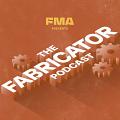
All Episodes
-
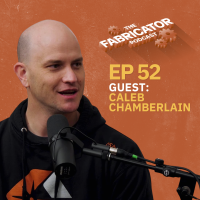 Ep. 052Transforming automated sheet metal fabrication with Caleb Chamberlain
Ep. 052Transforming automated sheet metal fabrication with Caleb Chamberlain -
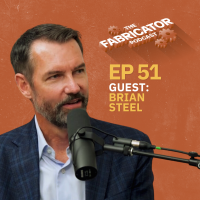 Ep. 051
Ep. 051 -
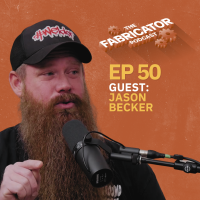 Ep. 050
Ep. 050 -
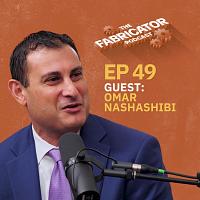 Ep. 049
Ep. 049 -
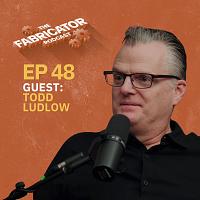 Ep. 048
Ep. 048 -
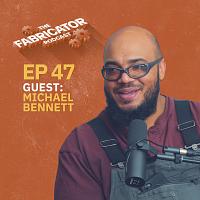 Ep. 047
Ep. 047 -
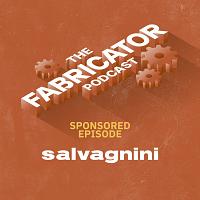 Bonus
Bonus -
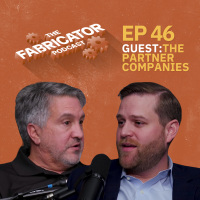 Ep. 046
Ep. 046 -
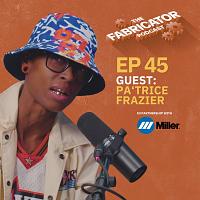 Ep. 045
Ep. 045 -
 Ep. 044
Ep. 044 -
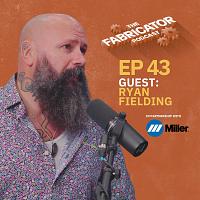 Ep. 043
Ep. 043 -
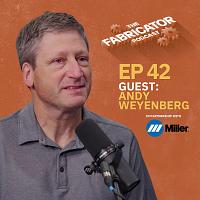 Ep. 042
Ep. 042 -
 Ep. 041
Ep. 041 -
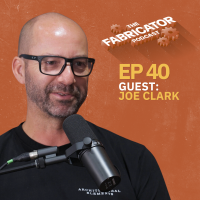 Ep. 040
Ep. 040 -
 Ep. 039
Ep. 039 -
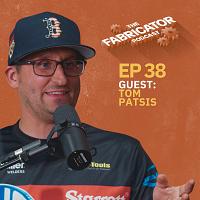 Ep. 038
Ep. 038 -
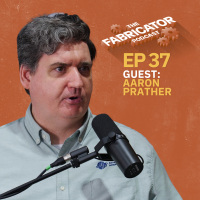 Ep. 037
Ep. 037 -
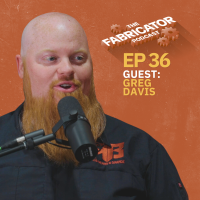 Ep. 036
Ep. 036 -
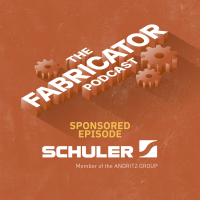 Bonus
Bonus -
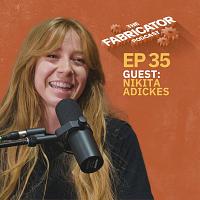 Ep. 035
Ep. 035 -
 Ep. 034
Ep. 034 -
 Ep. 033
Ep. 033 -
 Ep. 032
Ep. 032 -
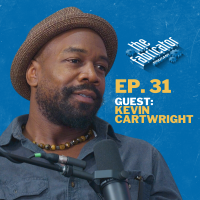 Ep. 031
Ep. 031 -
 Ep. 030
Ep. 030

























